Huge Iron Age hoard could alter understanding of ancient elites
The find in Melsonby, North Yorkshire, by a metal detectorist is one of the most important ever found, Historic England has said.

A huge Iron Age hoard discovered in a Yorkshire field by a metal detectorist could lead to a revaluation of the wealth and status of the elite living in northern Britain 2,000 years ago, an archaeologist has said.
The Melsonby Hoard, which lay untouched in two ditches near the North Yorkshire village of that name since the middle of the 1st century, comprises more than 800 items including partial remains of wagons, ceremonial spears and pony harnesses.
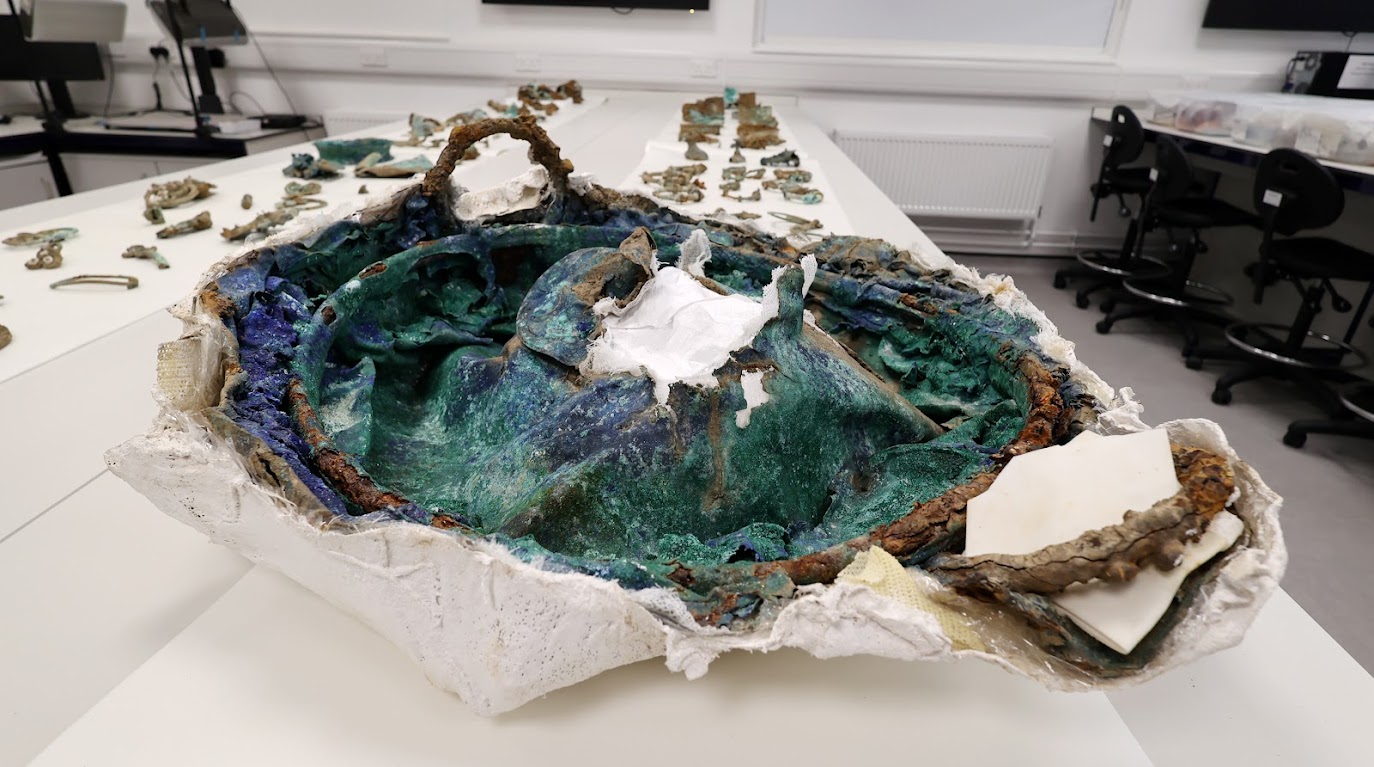
Professor Tom Moore, head of archaeology at Durham University, was called to the site and it quickly became clear to him that this was a “once-in-a-lifetime discovery”.
Vehicle components, for which it is hard to find parallels in Britain, include the partial remains of more than seven four-wheeled wagons or two-wheeled chariots.
There were elaborate harnesses for at least 14 ponies, three ceremonial spears and two ornate cauldrons or vessels – one lidded and likely used as a wine mixing bowl.
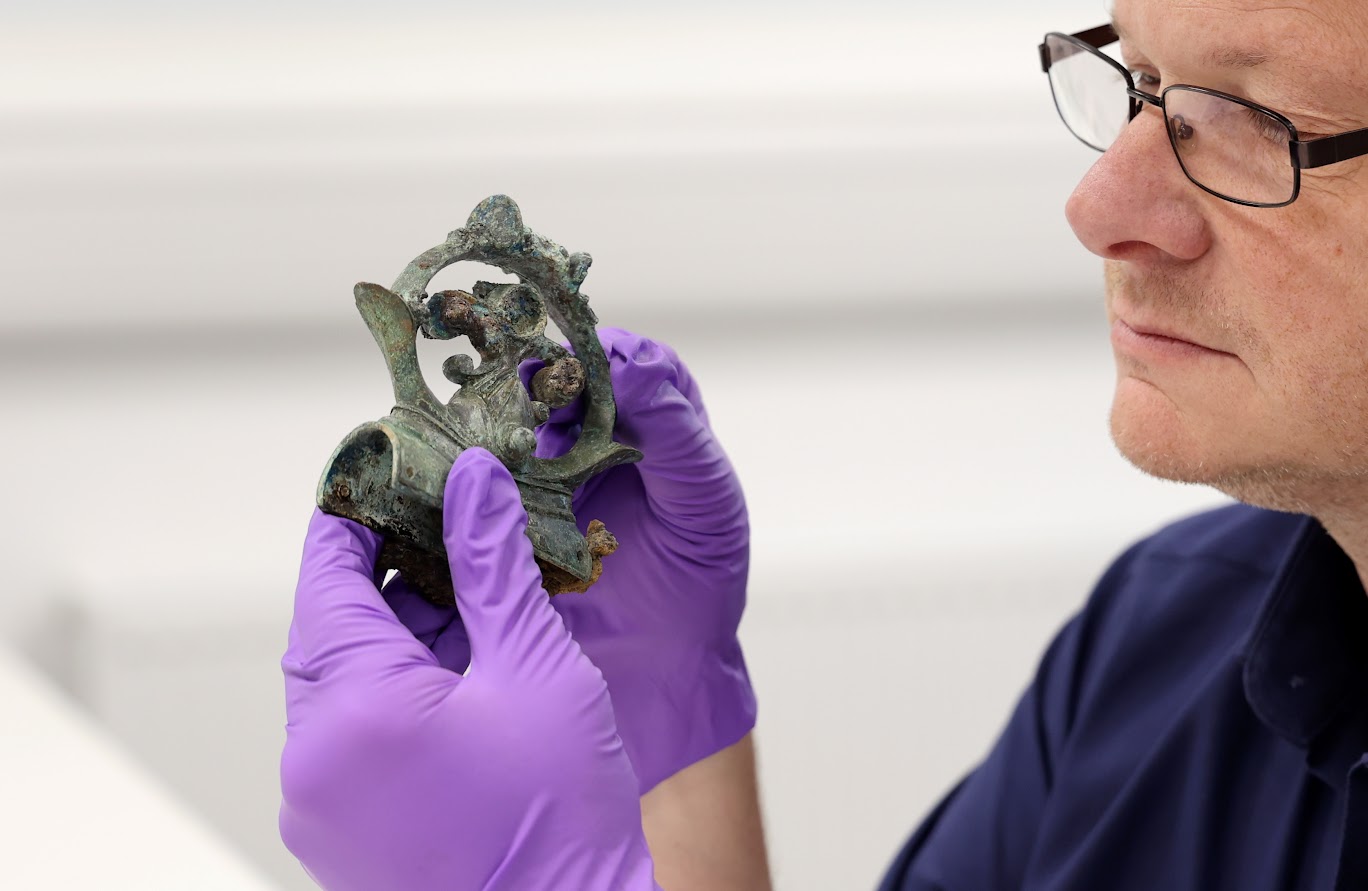
While some items look like those previously found in Britain, others better match those already discovered on the continent, which suggests whoever left them had long-distance connections.
Iron tyres, which were fitted to the outside of wooden wheels, had been intentionally bent out of shape and a large amount of the material had been ritualistically burnt or broken – rather than just smashed.
Prof Moore, who said research was at a very early stage, believed this might have been a symbolic process of people showing how wealthy and powerful they were.
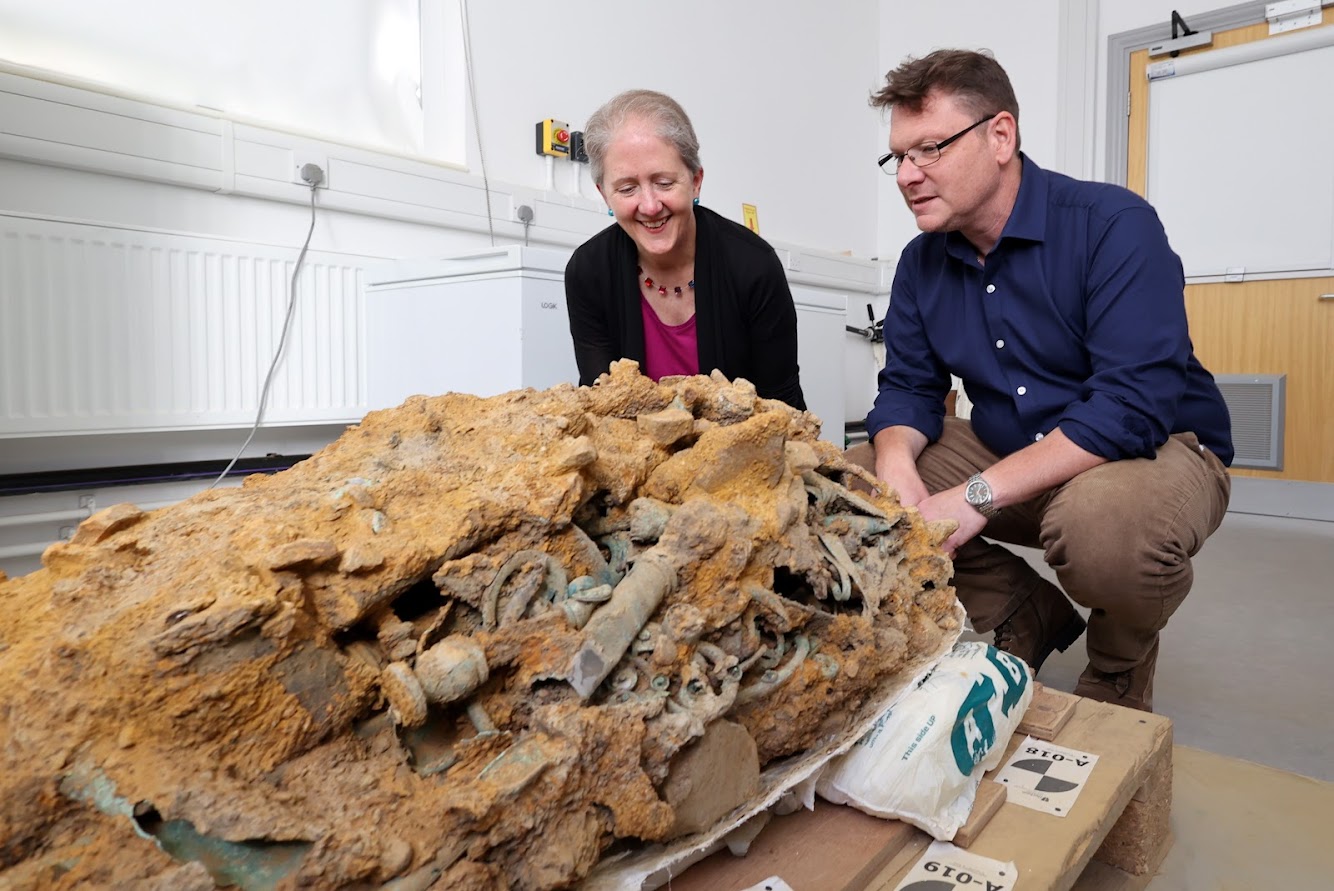
Melsonby is around a mile from Stanwick, the powerbase of the Brigantes tribe who in pre-Roman times controlled a large part of what is now Yorkshire.
Prof Moore said: “The Melsonby Hoard is of a scale and size that is exceptional for Britain and probably even Europe.
“Unusually it includes lots of pieces of vehicles and items such as the wine mixing bowl which is decorated in both Mediterranean and Iron Age styles.
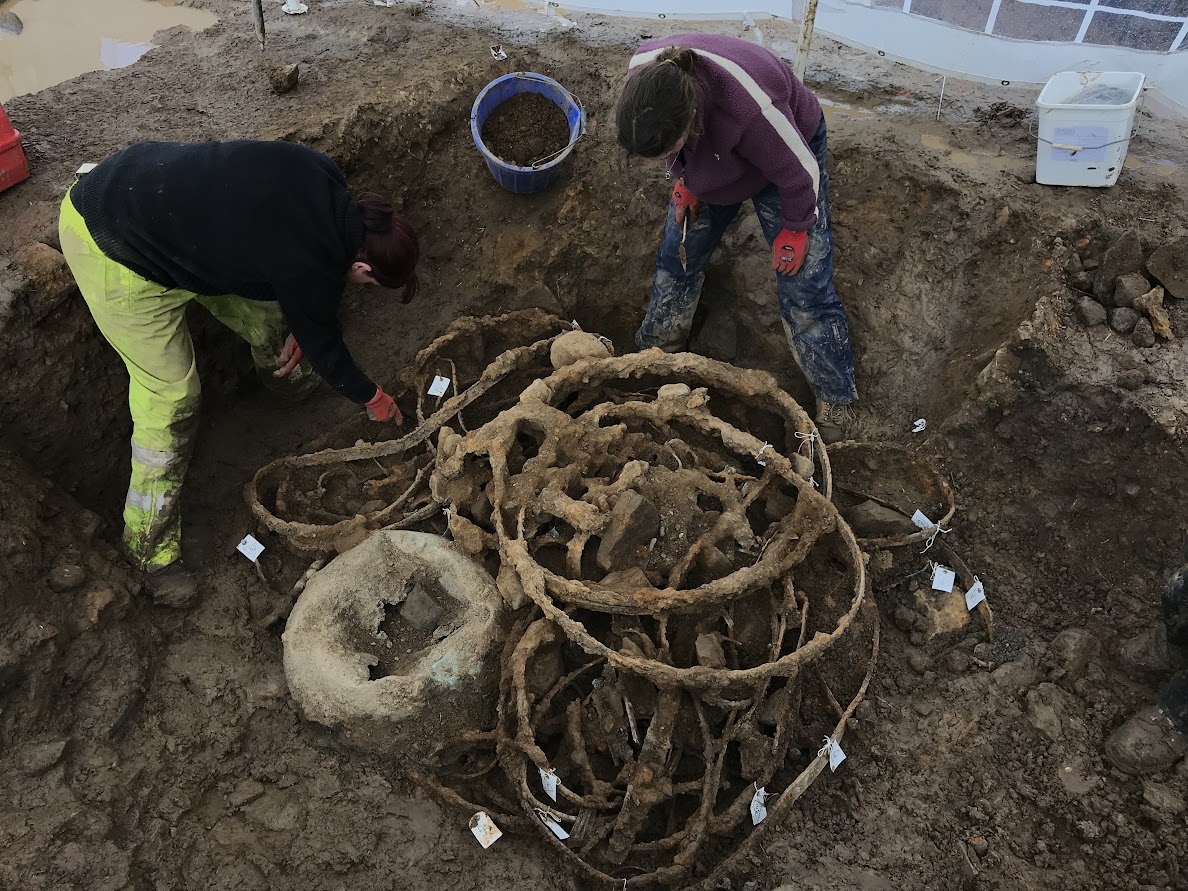
“The destruction of so many high-status objects, evident in this hoard, is also of a scale rarely seen in Iron Age Britain and demonstrates that the elites of northern Britain were just as powerful as their southern counterparts.”
He added: “Whoever is doing this is incredibly wealthy and it challenges the idea that northern Britain was a backwater, when it clearly was not.
“It has connections to continental Europe and the Roman Empire.
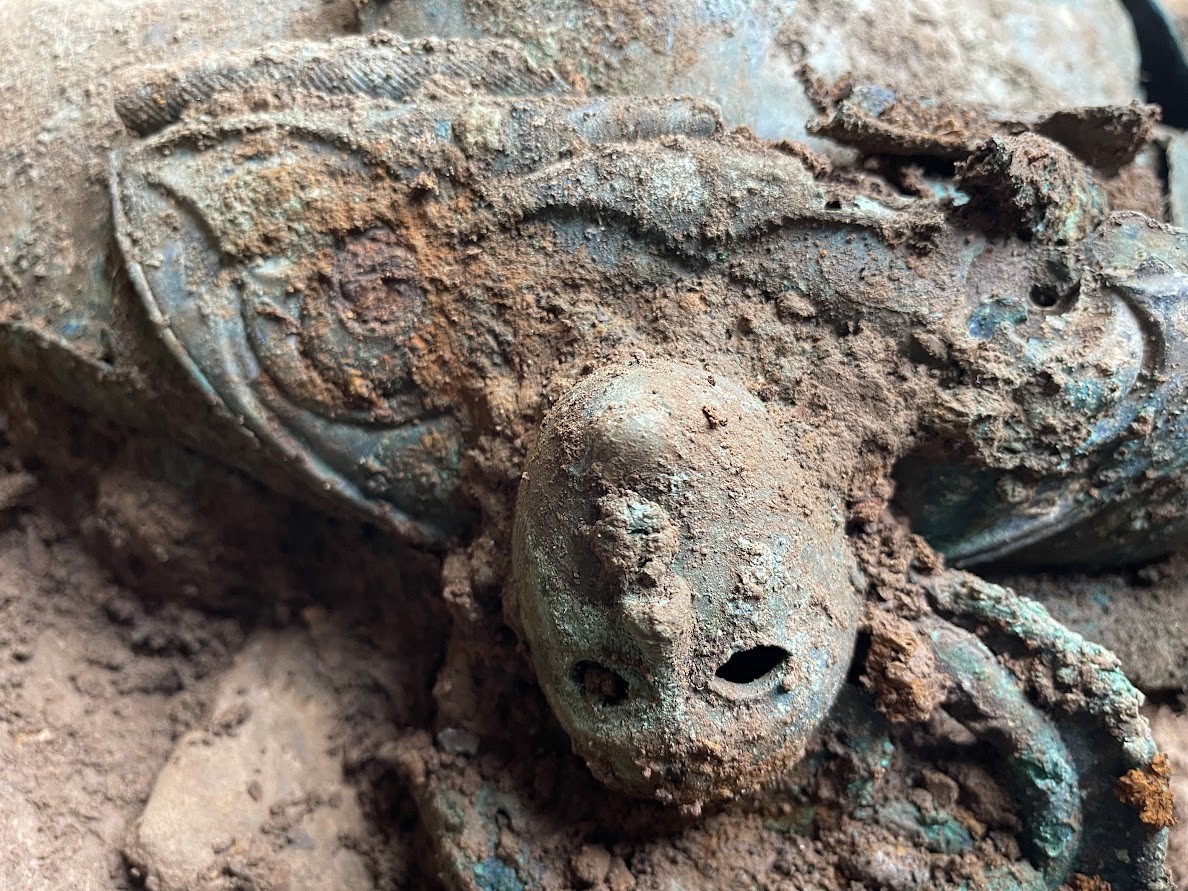
Prof Moore praised Mr Heads, who has declined publicity, for his responsible actions in contacting the authorities after his discovery.
Duncan Wilson, chief executive of Historic England, said: “Quite simply, this is one of the most important and exciting Iron Age period discoveries made in the UK.
“It sheds new light on Iron Age life in the north and Britain, but it also demonstrates connections with Europe.”
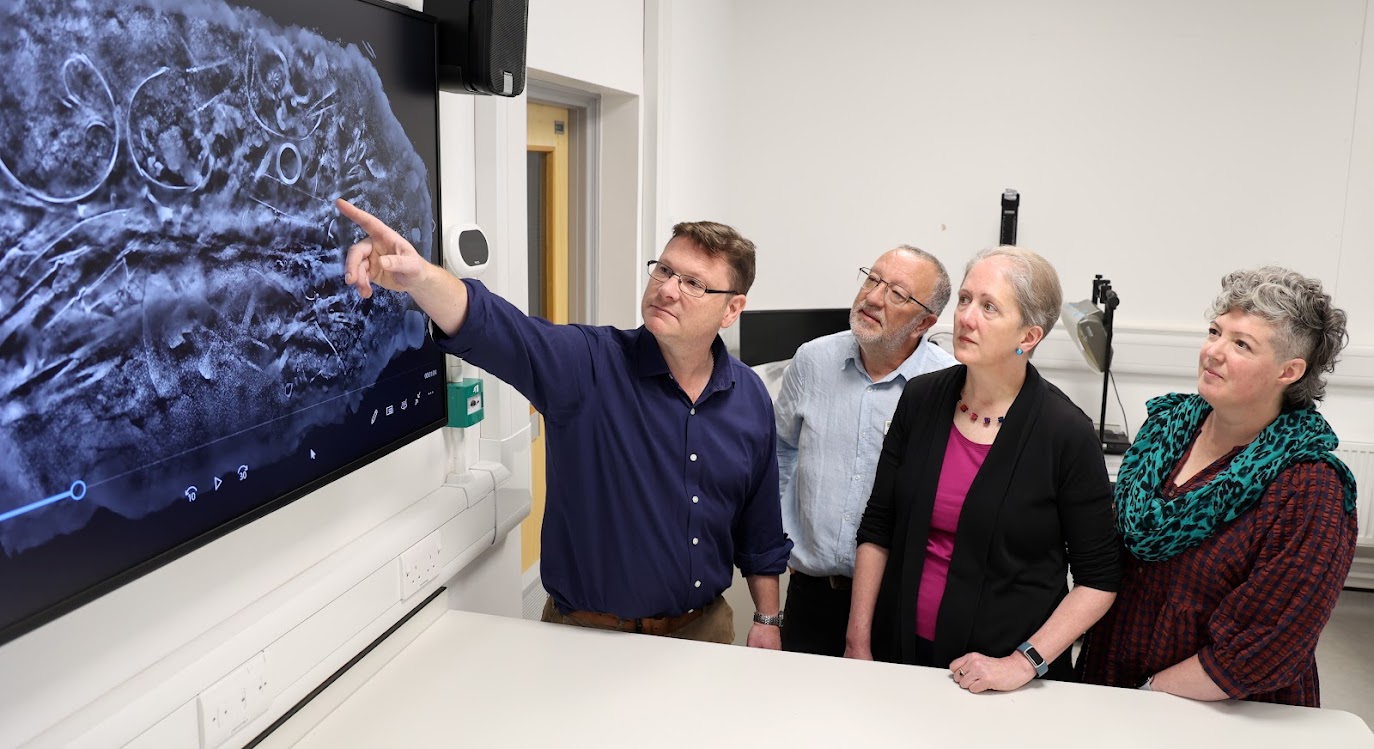
“It is significant not just for the quantity of objects buried together 2,000 years ago but also the quality and range of items.”
Heritage minister Sir Chris Bryant said: “The Melsonby Hoard is an extraordinary find, made up of a variety of unique and fascinating objects dating back to Iron Age Britain, which will help us to better understand the fabric of our nation’s history.”
One ditch was carefully examined on site while another was extracted as a whole and that has been X-rayed using a large scanner at Southampton University.
It will be kept intact, as a block, to preserve what is inside.
The dig was backed by a £120,000 grant from Historic England.
The Yorkshire Museum is launching a fundraising campaign to secure the hoard for the nation.
The value of the hoard has been calculated to be £254,000.
A selection of the items is going on show at the museum in York.





